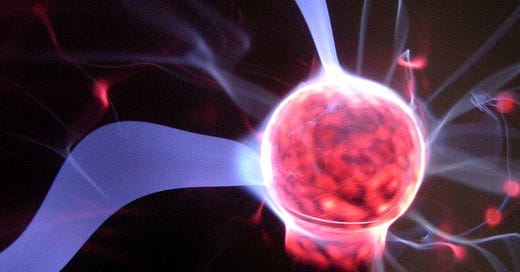Spinor geometry may be the way forward for a grand unified theory
There is a word in the title of this article that not everyone knows. What is a spinor?
A spinor, put simply, is a mathematical object that represents particles called fermions. These are particles with spin that is a multiple of 1/2. The following quote from Fields medalist Michael Atiyah from 1966 hasn’t changed as of 2024:
No one fully understands spinors. Their algebra is formally understood but their general significance is mysterious. In some sense they describe the “square root” of geometry and, just as understanding the square root of -1 took centuries, the same might be true of spinors.
Although we have all the formal mathematical machinery to understand spinors, which is the basis for Quantum ElectroDynamics (QED) and Quantum ChromoDynamics (QCD) which govern the behavior of electrons and quarks respectively, we do not understand how to interpret the geometry of these objects. The same cannot be said for vectors and tensors which govern particles with spins that are multiples of whole numbers like 1, 2, 3 and so on. Vector fields are the basis of three forces: electromagnetism, weak force, and the strong force.
Vectors have a very clear geometric meaning. They are objects that have magnitude and direction. Indeed, first-year calculus and linear algebra students learn about vectors, but they would only learn about spinors in an advanced course on quantum mechanics or quantum field theory.
Vectors can be rotated and translated in space. They can also be added together to create new vectors.
If I ask you to picture a vector or adding two together, you can imagine something like this:
Atiyah and most other physicists call spinor geometry the “square root” of geometry because in a sense spinors are the square roots of vectors. For example, it takes a vector 360 degrees of rotation to return to its starting point but it takes 720 degrees for a spinor to return to its starting point.
This can be demonstrated in physical space using either the plate or belt tricks or using connected gears as in this demonstration:
Despite all these clever demonstrations, we do not understand the geometry of spinors that well, and it may be because we have been treating them like vectors.
In the most important representation, which is where a spinor is made of two complex numbers, they are in fact rotations. Understanding what spinors are from a deep geometric standpoint might be necessary to connect gravity, the forces, and matter in a grand unified field theory.
At one time, we didn’t understand what the square root of -1 meant, and it took centuries along with some of the brightest mathematicians who ever lived to flesh out complex analysis.
In the same way, spinors are the square root, not of part of the number line, but part of vector spaces, and like taking the square root of a negative number they take us to an entirely new realm of spinor geometry which could be the key to unlocking a theory of everything.
What follows is my understanding of what spinors really are and why decades of treating them like weird vectors might be holding quantum mechanics back. This view is predominately from a paper by Gerrit Coddens in Symmetry Magazine.
Keep reading with a 7-day free trial
Subscribe to The Infinite Universe to keep reading this post and get 7 days of free access to the full post archives.




